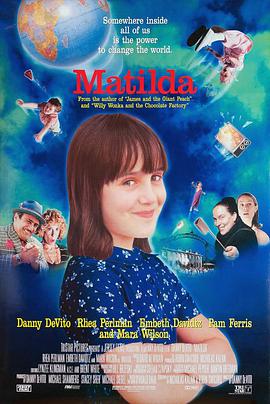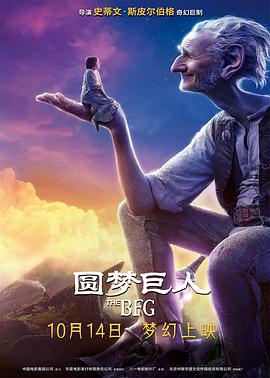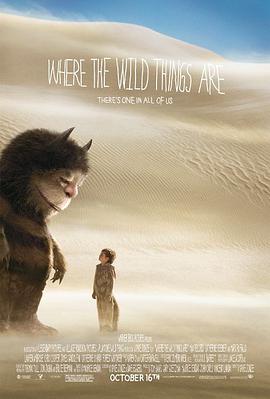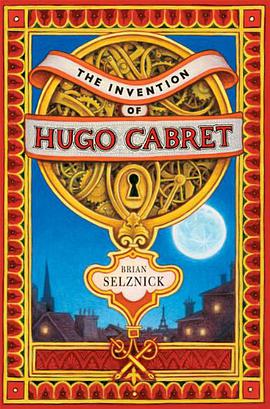在线阅读本书
Hugo Cabret,这个住在巴黎火车站巨墙内的孤儿,靠着社会救济金和行窃,勉强过日。但他看似简陋而清苦的生活,其实却隐藏了一个极大的秘密。但这个秘密,却无意间被火车站的玩具零售商和一个热爱书籍的小女孩发现了。Hugo该怎么做,才能不让他隐藏的身份被揭露呢?而他的真实身份又是什么呢?这本New York Times童书最佳销售排行榜上,连续十周让哈利波特也敬陪末座的魔幻故事,结合了绘本和小说的两种特性,超过三百页的连续插画,让整本书看起来像是部小型的动画电影,生动地将这个少年的魔幻人生呈现出来。
Book Description
Orphan, clock keeper, and thief, Hugo lives in the walls of a busy Paris train station, where his survival depends on secrets and anonymity. But when his world suddenly interlocks with an eccentric, bookish girl and a bitter old man who runs a toy booth in the station, Hugo's undercover life, and his most precious secret, are put in jeopardy. A cryptic drawing, a treasured notebook, a stolen key, a mechanical man, and a hidden message from Hugo's dead father form the backbone of this intricate, tender, and spellbinding mystery.
Amazon.com Exclusive
A Letter from Brian Selznick
Dear readers,
When I was a kid, two of my favorite books were by an amazing man named Remy Charlip. Fortunately and Thirteen fascinated me in part because, in both books, the very act of turning the pages plays a pivotal role in telling the story. Each turn reveals something new in a way that builds on the image on the previous page. Now that I’m an illustrator myself, I’ve often thought about this dramatic storytelling device and all of its creative possibilities.
My new book, The Invention of Hugo Cabret, is a 550 page novel in words and pictures. But unlike most novels, the images in my new book don't just illustrate the story; they help tell it. I've used the lessons I learned from Remy Charlip and other masters of the picture book to create something that is not a exactly a novel, not quite a picture book, not really a graphic novel, or a flip book or a movie, but a combination of all these things.
I began thinking about this book ten years ago after seeing some of the magical films of Georges Méliès, the father of science-fiction movies. But it wasn’t until I read a book called Edison's Eve: The Quest for Mechanical Life by Gaby Woods that my story began to come into focus. I discovered that Méliès had a collection of mechanical, wind-up figures (called automata) that were donated to a museum, but which were later destroyed and thrown away. Instantly, I imagined a boy discovering these broken, rusty machines in the garbage, stealing one and attempting to fix it. At that moment, Hugo Cabret was born.
A few years ago, I had the honor of meeting Remy Charlip, and I'm proud to say that we've become friends. Last December he was asking me what I was working on, and as I was describing this book to him, I realized that Remy looks exactly like Georges Méliès. I excitedly asked him to pose as the character in my book, and fortunately, he said yes. So every time you see Méliès in The Invention of Hugo Cabret, the person you are really looking at is my dear friend Remy Charlip, who continues to inspire everyone who has the great pleasure of knowing him or seeing his work.
Paris in the 1930's, a thief, a broken machine, a strange girl, a mean old man, and the secrets that tie them all together... Welcome to The Invention of Hugo Cabret.
Yours,
Brian Selznick
Amazon.com Exclusive
Brian Selznick on a "Deleted Scene" from The Invention of Hugo Cabret
This is a finished drawing that I had to cut from The Invention of Hugo Cabret. I was still rewriting the book when I had to begin the final art. There was originally a scene in the story where this character, Etienne, is working in a camera shop. On one of my research trips to Paris I spent an entire day visiting old camera shops and photographing cameras from the 1930's and earlier, as well as the facades of the shops themselves. I researched original French camera posters and made sure that the counter and the shelves were accurate to the time period. I did all the drawings in the book at 1/4 scale, so they were very small and I often had to use a magnifying glass to help me see what I was drawing. After I finished this drawing I continued to rewrite, and for various reasons I realized that I needed to move this scene from the camera shop to the French Film Academy, which meant that I had to cut this picture. I tried really hard to find ANOTHER moment when I could have Etienne in a camera shop, but, as painful as it was, I knew the picture had to go. I'm glad to see it up on the Amazon website because otherwise no one would have ever seen all those tiny cameras I researched and drew so carefully!
--Brian Selznick
Illustrations
From Publishers Weekly
Here is a true masterpiece—an artful blending of narrative, illustration and cinematic technique, for a story as tantalizing as it is touching.Twelve-year-old orphan Hugo lives in the walls of a Paris train station at the turn of the 20th century, where he tends to the clocks and filches what he needs to survive. Hugo's recently deceased father, a clockmaker, worked in a museum where he discovered an automaton: a human-like figure seated at a desk, pen in hand, as if ready to deliver a message. After his father showed Hugo the robot, the boy became just as obsessed with getting the automaton to function as his father had been, and the man gave his son one of the notebooks he used to record the automaton's inner workings. The plot grows as intricate as the robot's gears and mechanisms [...] To Selznick's credit, the coincidences all feel carefully orchestrated; epiphany after epiphany occurs before the book comes to its sumptuous, glorious end. Selznick hints at the toymaker's hidden identity [...] through impressive use of meticulous charcoal drawings that grow or shrink against black backdrops, in pages-long sequences. They display the same item in increasingly tight focus or pan across scenes the way a camera might. The plot ultimately has much to do with the history of the movies, and Selznick's genius lies in his expert use of such a visual style to spotlight the role of this highly visual media. A standout achievement. Ages 9-12. (Mar.)
From School Library Journal
Grade 4–9—With characteristic intelligence, exquisite images, and a breathtaking design, Selznick shatters conventions related to the art of bookmaking in this magical mystery set in 1930s Paris. He employs wordless sequential pictures and distinct pages of text to let the cinematic story unfold, and the artwork, rendered in pencil and bordered in black, contains elements of a flip book, a graphic novel, and film. It opens with a small square depicting a full moon centered on a black spread. As readers flip the pages, the image grows and the moon recedes. A boy on the run slips through a grate to take refuge inside the walls of a train station—home for this orphaned, apprentice clock keeper. As Hugo seeks to accomplish his mission, his life intersects with a cantankerous toyshop owner and a feisty girl who won't be ignored. Each character possesses secrets and something of great value to the other. With deft foreshadowing, sensitively wrought characters, and heart-pounding suspense, the author engineers the elements of his complex plot: speeding trains, clocks, footsteps, dreams, and movies—especially those by Georges Méliès, the French pioneer of science-fiction cinema. Movie stills are cleverly interspersed. Selznick's art ranges from evocative, shadowy spreads of Parisian streets to penetrating character close-ups. Leaving much to ponder about loss, time, family, and the creative impulse, the book closes with a waning moon, a diminishing square, and informative credits. This is a masterful narrative that readers can literally manipulate.
—Wendy Lukehart, Washington DC Public Library
From Booklist
Selznick's "novel in words and pictures," an intriguing mystery set in 1930s Paris about an orphan, a salvaged clockwork invention, and a celebrated filmmaker, resuscitates an anemic genre--the illustrated novel--and takes it to a whole new level. The result is somewhat similar to a graphic novel, but experiencing its mix of silvery pencil drawings and narrative interludes is ultimately more akin to watching a silent film. Indeed, movies and the wonder they inspire, "like seeing dreams in the middle of the day," are central to the story, and Selznick expresses an obvious passion for cinema in ways both visual (successive pictures, set against black frames as if projected on a darkened screen, mimic slow zooms and dramatic cuts) and thematic (the convoluted plot involves director Georges M'eli'es, particularly his fanciful 1902 masterpiece, A Trip to the Moon .) This hybrid creation, which also includes movie stills and archival photographs, is surprising and often lovely, but the orphan's story is overshadowed by the book's artistic and historical concerns (the heady extent of which are revealed in concluding notes about Selznick's inspirations, from the Lumi'ere brothers to Fran'eois Truffaut). Nonetheless, bookmaking this ambitious demands and deserves attention--which it will surely receive from children attracted by a novel in which a complex narrative is equally advanced by things both read and seen.
Jennifer Mattson
From AudioFile
Inside a Paris train station in 1932, a small boy named Hugo Cabret secretly keeps all the clocks running. Like the workings of a clock, the parts of this intriguing story interlock, and the audio program is a marvel in itself. Jeff Woodman narrates Hugo's story, which introduces listeners to an automaton, a mechanical figure that writes and draws, and the early science fiction films of Georges M?li?s. Woodman clearly captures Hugo and his friends as they try to discover the secrets of an old man. Sound sequences are placed within the narrative where in the print edition of the book a series of illustrations occurs. A bonus DVD accompanies the set, and it's a dynamic "extra." The disc contains not just a filmed interview with Selznick, in which he talks about his writing and illustration process, but also images of the actual illustrations. This wholly original integration of audio narration, soundscapes, illustration, and author discussion is an experience listeners of all ages should not miss. Discovering how the intricate puzzle of elements fits together like clockwork will provide repeated listenings to figure out. R.F.W. Winner of AudioFile Earphones Award
Book Dimension
length: (cm)21.3 width:(cm)14.2



